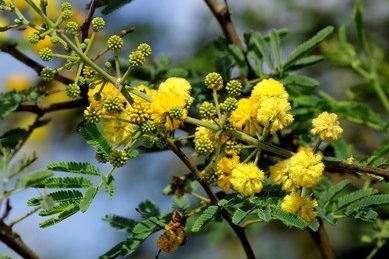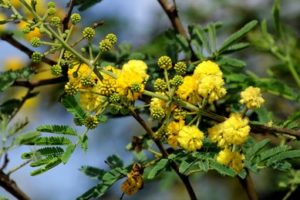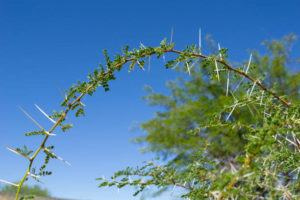Acacia nilotica: Guardians of the Mara

Image credit: Shutterstock

Image credit: Shutterstock
The Gum Arabic tree might sound like an exotic species, but don’t let its common name deceive you. Scientifically known as Acacia nilotica (L.) Delile, this tree is not only indigenous to the Middle East, but also to Australia and many parts of Africa including Kenya. The Mara plains are dotted with the Gum Arabic tree, known in the Maa dialect as olkiloriti. It is easily distinguishable by its sweetly scented golden yellow flower bulbs and thorn-filled branches. When injured, the bark produces a sticky gum that gives the tree its name.
Acacia trees are known for their ability to grow in some of the harshest climatic conditions. Their small leaves limit the plants’ water loss through transpiration, their tap root systems grow deep and enable the plant to reach underground water reservoirs. Not to mention their hardy barks that are fire resistant and protect the trees during wildfires. To the untrained person, these parts of the Gum Arabic tree might not draw any interest, but Maasai medicine men know of their curative properties.
The Maasai are traditionally a semi-nomadic and pastoralist community. In the past, wealth was measured by the quantity of livestock – particularly cattle. Ownership of these domestic animals influenced their culture and lifestyle, from their seasonal migrations to their rites and rituals, and even their diet. The staple food of the Maasai was meat, milk and blood. A lot of care was taken to ensure food safety because when not prepared correctly, a delicacy could turn deadly. Food poisoning could easily kick in with symptoms such as nausea, vomiting, diarrhea, and intestinal pains. But even when things took this turn for the worse, the Maasai knew where to look for a cure.
A decoction for stomach upsets was prepared by boiling the bark, roots, or leaves of the olkiloriti. Once these parts yielded all their medicinal qualities to the water, they were strained out and the concentrate was left to cool. The result was a brown-coloured liquid that was taken orally and relieved the digestion issues within a day or two. The bitterness of the decoction was reduced by diluting it with honey, milk, or tea.
What other traditional medicines do you know of that relieved stomach upsets? Share them with us!





